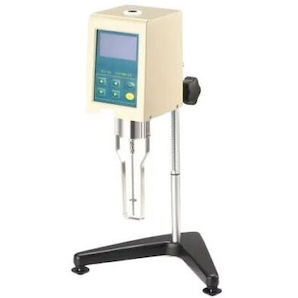
-----
Electropolishing stainless steel
1. When electropolishing of stainless steel is operating well a viscous layer forms on the work piece (looks like FeO), Do you know what that layer is composed of, and why does it have high viscosity?
2. Gas evolution occurs at the work piece (anode) what is being evolved, and why is gas evolution not consistent, and seemingly not directly related to the polishing efficiency?
CPID
1995
1. Metallic salt sludges that are on their way to the bottom of the tank.
2. The gas is oxygen. At low current density the solution etches rather than polishes. I would guess that at the threshold current density where polishing comes into play, there is no notable increase in oxygen evolution, thus you see no additional gassing.
The 'standard' textbooks have surprisingly deep treatment of electropolishing. Get hold of The Metal Finishing Guidebook, ASM International's "Metals Handbook--
Volume 5: Surface Engineering, and (especially) the Electroplating Engineering Handbook ⇦ this on
eBay,
AbeBooks, or
Amazon [affil link]
.

Ted Mooney, P.E.
Striving to live Aloha
finishing.com - Pine Beach, New Jersey
Ted is available for instant help
or longer-term assistance.
1995
1. Since the high viscosity layer is metal sludges, presumably composed of mostly insoluble metal salts (Fe, Ni, Cr(SO4's and PO4's)? or oxides?) how is the viscous layer related to the Helmholtz double layer, and how do the relative thickness's compare. Why is the high viscosity layer required for polishing to occur instead of etching?
2. Since O2 is produced at the anode, is it from H2O? or is it from PO4 and SO4? If it is from H2O how does the specific gravity (related to H2O content) affect polishing efficiency, and how does the fact that virtually all of the H2O is strongly bonded to the sulfuric acid affect the process?
CPID
1995
Electropolishing blend and current density. I have been electropolishing my stainless steel hardware and fasteners for my sailboat for over twenty years. From the same 5 gal jug of sulfuric and phosphoric acid mixture,too. I think it may be getting little tired, I want to replace it, but forgot the recommended ratio. Also, what is the optimal current density? Thank you for your help.
Stan Svobodaboat repair Tampa, Florida
2006
Seeing as many shops electropolish with straight sulfuric acid, one answer is 100 percent sulfuric / 0 percent phosphoric. so I don't think there's a specific answer to your question, Stan. See if your library has the above-mentioned Electroplating Engineering Handbook, which will refresh your memory on a number of different formulations, remind you of safety considerations, and offer some advise on disposal of the hazardous waste.

Ted Mooney, P.E.
Striving to live Aloha
finishing.com - Pine Beach, New Jersey
Ted is available for instant help
or longer-term assistance.
2006
I am former committee president for Tamilnadu stainless steel mfrs., association in Chennai.we are facing labor problems in s.s polishing.we wish to introduce alternate method for polish. So, please advise regarding electropolish methods. We tried electropolish but we did not get bright polishing on stainless steel.
with regards,
former committee president - Chennai, T.nadu, India
2007
If you can provide the specific details of exactly what you tried maybe someone can offer a comment specific to that situation, but the most common problem is etching due to too much water in the bath or the current density being too low. As you will see if you search the site, we have several dozen threads on line here regarding electropolishing of stainless steel. We also recommend several introductory books on the subject on this page. Good luck. Thanks.

Ted Mooney, P.E.
Striving to live Aloha
finishing.com - Pine Beach, New Jersey
Ted is available for instant help
or longer-term assistance.
2007
Q, A, or Comment on THIS thread -or- Start a NEW Thread

